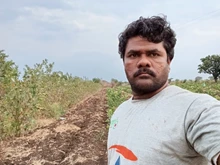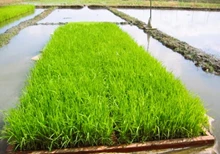
Now, he manages to produce about 10 quintals of finger millets (ragi) from the same land after the implementation of better organic and scientific techniques as explained by the Odisha Millet Mission (OMM).
Likewise, Trilochan Paraja of Narakendraguda village in Kundura block was able to harvest approximately 10 quintals of ragi from his one acre of land and up to two quintals before OMM’s involvement.
In the districts of Jani and Paraja, thousands of tribal farmers have gained benefits from the usage of better technology and scientific agricultural practices introduced by OMM since its launch in the district in the year 2017 which has further strengthened their economy.
Officials also say that millet cultivation is not a new concept for the district tribal farmers who have been practicing it for decades for its higher nutrient content compared to the other grains.
But, due to the adverse agro-climatic conditions and the usage of traditional farming methods, the yield was significantly lower.
Tapas Chandra Roy, Managing Director of Agricultural Technology Management Agency (ATMA) in Koraput, Odisha said, “The OMM specially fabricated program was initiated in the tribal districts to renew millets in farms. Farmers taught good agronomic methods along with a system of millet intensification (SMI) as part of the mission resulting in significant yield. Millet Procurement Centres (Mandia Mandi) are also being set up to help farmers in marketing their produce.”
He also added that millet is grown in less fertile soil with a very little amount of water. Making it ideal for millet cultivation the Koraput’s soil is mostly acidic in nature and the land is also sloppily bounded by the hills.
Adding to this, an official said financial incentives of Rs 5,000 and Rs 2,500 per hectare respectively for SMI and for line transplanting are also being offered to motivate farmers to grow millets.











